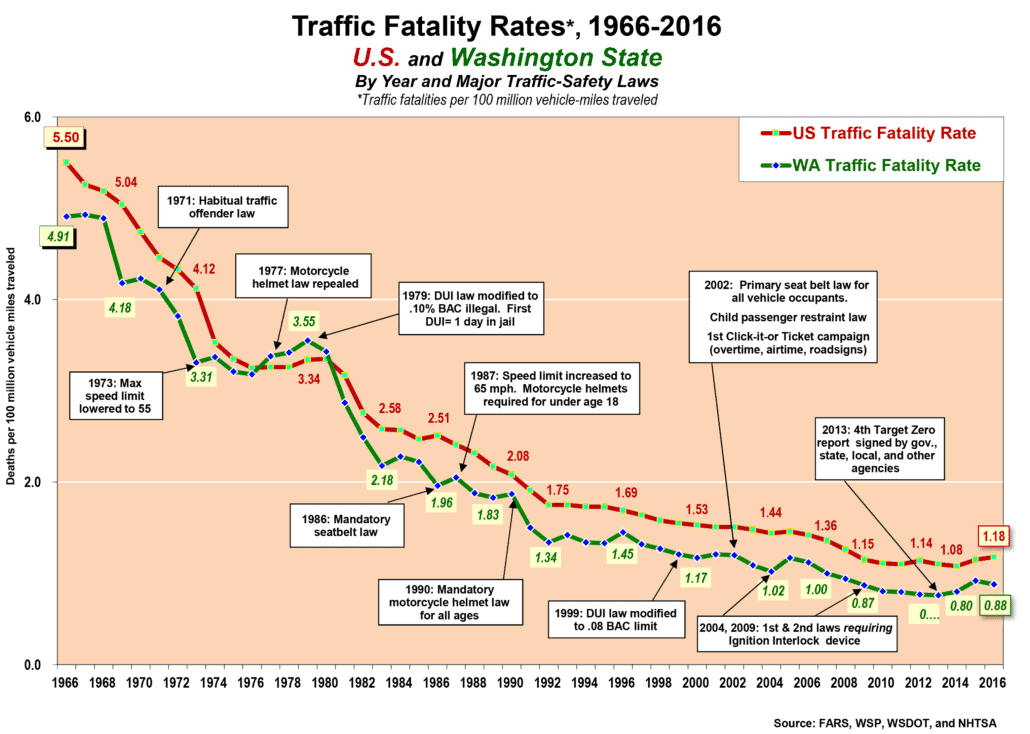Status Update
From 2002 to 2011, Washington averaged 22 fewer traffic fatalities and 80 fewer serious injuries each year. However, to reach Target Zero by 2030, we must average 24 fewer fatalities and 120 fewer serious injuries annually.
We have had great successes in some areas of traffic safety:
Current projections for young drivers age 16-25 involved in fatal and serious injury crashes show the ability to reach zero before 2030.
Unrestrained vehicle occupants have dropped dramatically and projections show zero before 2020!
Various engineering improvements and safety enhancements have dramatically reduced the incidence of head-on crashes.
However, other areas of traffic safety need significant improvements, such as pedestrians and motorcyclists, which both show increasing trends of traffic fatalities and serious injuries.
Please visit our Research & Data page for more statistical information.
Our Goals
Outcome measure: Decrease number of traffic related fatalities on all roads from 454 in 2011 to zero by 2030.
Leading Indicators:
- Decrease number of alcohol and or drug/impaired driver-involved fatalities from 199 in 2011 to 152 by 2017.
- Decrease number of speed involved fatalities from 169 in 2011 to 123 by 2017.
- Decrease the number of young drivers age 16-25 involved traffic fatalities from 146 in 2011 to 110 by 2017.

